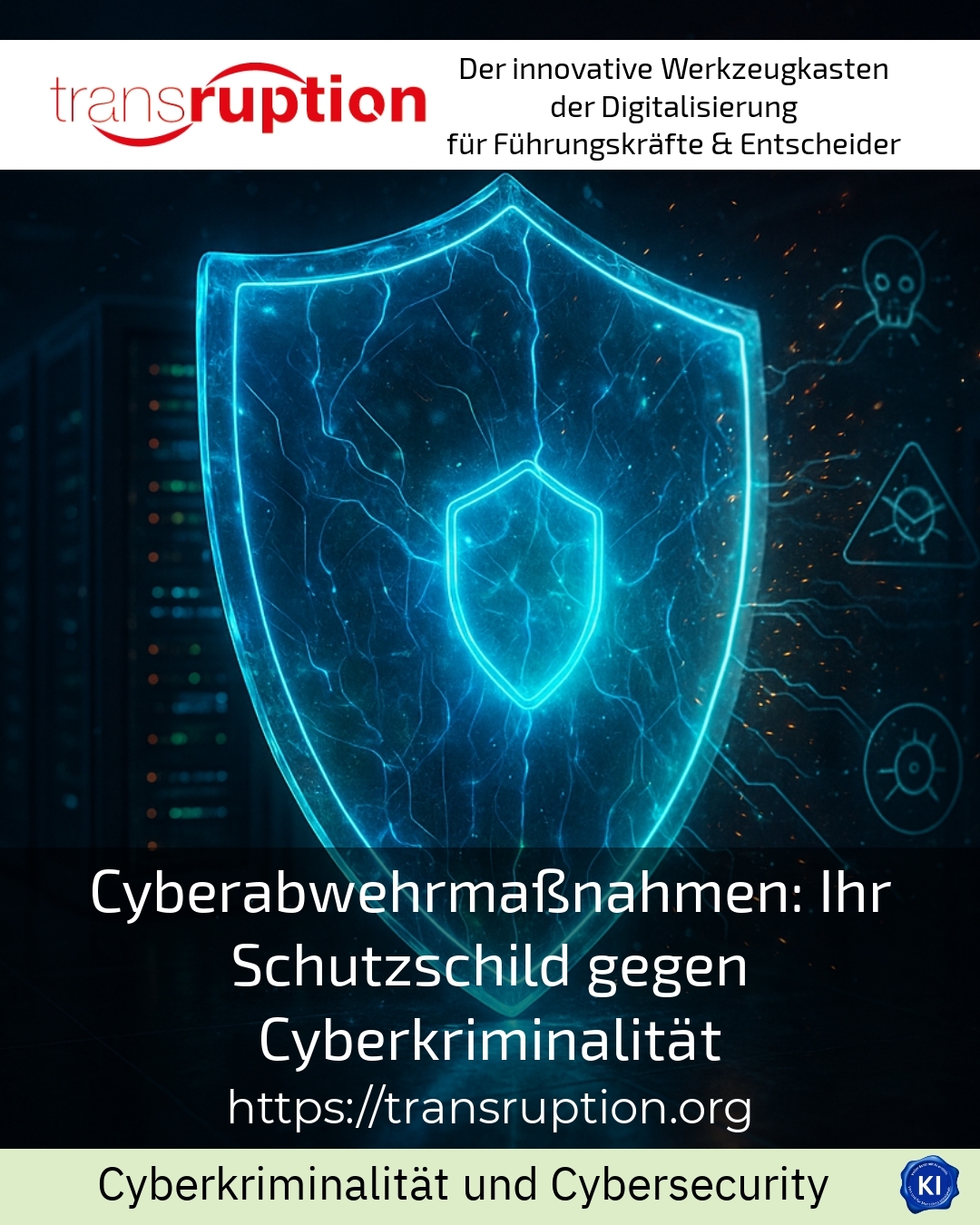The ever-growing threat of cybercrime makes cyber defence measures indispensable today. They serve as a protective shield against unauthorised access, data manipulation or sabotage in companies and organisations. With targeted cyber defence measures, risks can be minimised and information security can be permanently improved, which is becoming increasingly important in an increasingly digitalised world.
Why cyber defence measures are essential for companies
Many companies are repeatedly confronted with sophisticated cybercrime. Hackers not only use classic phishing attacks, but also sophisticated methods such as ransomware or social engineering to gain access to sensitive data. Around 80 per cent of all attacks start with human error, which shows that technical solutions alone are not enough. Cyber defence measures help to detect and ward off these threats at an early stage.
For example, one medium-sized company has successfully reduced the risk of phishing attacks through regular employee training. Another retail company implemented multi-factor authentication (MFA) and reduced unauthorised access by more than 70 percent as a result. An IT service provider was also able to protect its systems resiliently against attacks through a combination of firewalls, regular penetration tests and automated backups.
Main components of effective cyber defence measures
To act as an effective protective shield, cyber defence measures comprise several levels. They combine technical solutions with organisational processes and training. This results in a multi-layered security concept that can react flexibly to new threats.
Technical safety precautions
Basic protection includes firewalls and anti-virus programmes that block gateways for malware and control network access. Patch management plays an important role, as security gaps need to be closed quickly with updates. In addition, multi-factor authentication makes unauthorised access more difficult, even with stolen passwords.
Example: A logistics company introduced strict patch management and thus prevented an attack through a known vulnerability that had previously led to significant outages at competitors. Another customer from the financial sector integrated firewall and endpoint security systems to secure the entire network. A law firm relied on automated backup solutions based on the 3-2-1 rule to prevent data loss after a ransomware attack.
Organisational measures and training
In addition to technical resources, training on how to deal with cyber threats and clear internal guidelines are essential. In this way, employees learn to recognise attacks such as phishing detection in good time and react correctly. Continuous sensitisation ensures that security awareness remains permanently present.
A medium-sized industrial company held regular workshops on social engineering and observed a significant reduction in security incidents. At an IT company, new employees receive mandatory training before being granted access to systems. A wholesale company has consistently organised access rights according to the zero trust principle, which has significantly reduced the internal attack surface.
Responsiveness through incident response
Emergency plans and specialised teams for the rapid analysis and containment of security incidents are another important pillar. Regular exercises and running through scenarios help to act appropriately in an emergency and limit damage.
BEST PRACTICE at the customer (name concealed due to NDA contract): An international consulting company set up a Security Operations Centre (SOC). Following the successful introduction of cyber defence measures, attacks were detected and repelled much more quickly. The knowledge gained from this was incorporated into the optimisation of the security strategy.
A medium-sized online retailer also developed a detailed crisis plan with the support of external coaches, including a communication strategy in the event of a cyberattack. An energy supplier carries out annual cyber exercises to maintain operations even in the event of IT disruptions.
Strategically support and further develop cyber defence measures
Cyber defence materials not only support companies technically. Transruption coaching can accompany projects relating to cyber defence measures by providing impetus for corporate development and security. Many companies report uncertainty in management when implementing modern defence strategies. Coaching helps to prioritise suitable measures and anchor them within the company.
A customer in the logistics sector used this accompanying support to integrate a security awareness programme into its operations in the long term. A manufacturing company also benefited from a structured approach to the introduction of a zero-trust architecture. A service provider in the healthcare sector was supported with targeted advice on complying with legal data protection requirements and thus prepared for future cyber risks.
My analysis
Cyber defence measures are essential today to protect companies from the many dangers of the digital world. They combine technical systems, organisational guidelines and training to create a holistic security concept. Practical examples from various industries show how complex protection needs to be considered and how effective coordinated measures are. Transruption coaching supports companies in implementing these complex processes and continuously adapting them to the dynamic threat situation. In this way, it helps to sustainably anchor security and proactively minimise risks.
Further links from the text above:
Wikipedia: Cyber defence
Zenith: Cybercrime protection
Allgeier Cyris: Cyber defence glossary
CyberDirekt: Cybercrime protection measures
Sparkasse: Cybercrime protection for the company
Secuinfra: What is cyber defence
Bitkom: Cybercrime protection measures
For more information and if you have any questions, please contact Contact us or read more blog posts on the topic TRANSRUPTION here.
















